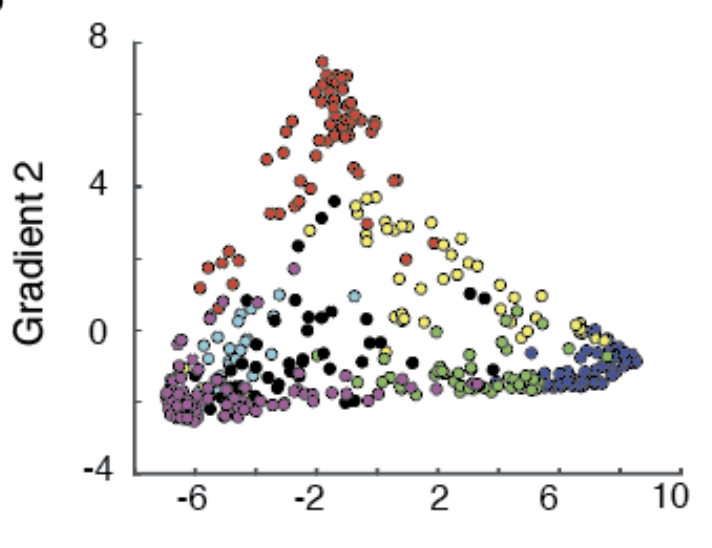Abstract
Background: Treatment-Resistant Depression (TRD) refers to patients with major depressive disorder who do not remit after two or more antidepressant trials. TRD is common and highly debilitating, but its neurobiological basis remains poorly understood. Recent neuroimaging studies have revealed cortical connectivity gradients that dissociate primary sensorimotor areas from higher-order associative cortices. This fundamental topography determines cortical information flow and is affected by psychiatric disorders. We examined how TRD impacts this hierarchical cortical organization.
Methods: We analyzed resting-state fMRI data from a mindfulness-based intervention study in 56 TRD patients and 28 healthy controls. Using novel gradient extraction tools, measures of cortical gradient dispersion within and between functional brain networks were derived, compared across groups, and associated with graph theoretical measures of network topology. Within TRD, baseline cortical gradient dispersion measures were correlated with baseline clinical measures (anxiety, depression, mindfulness), as well as with changes in these measures following treatment with either mindfulness-based therapy or a health enhancement program.
Results: Cortical gradient dispersion was reduced within major intrinsic brain networks in TRD. Reduced cortical gradient dispersion correlated with increased network modularity assessed through graph theory-based measures of network topology. Lower dispersion among Default Mode Network regions, a transmodal system linked to depression symptomatology, related to current levels of trait anxiety, depression, and mindfulness, but not to changes in these domains following treatment.
Conclusions: Our findings reveal widespread alterations in cortical gradient architecture in TRD, implicating a significant role for the Default Mode Network in mediating depression, anxiety, and lower mindfulness in patients.
